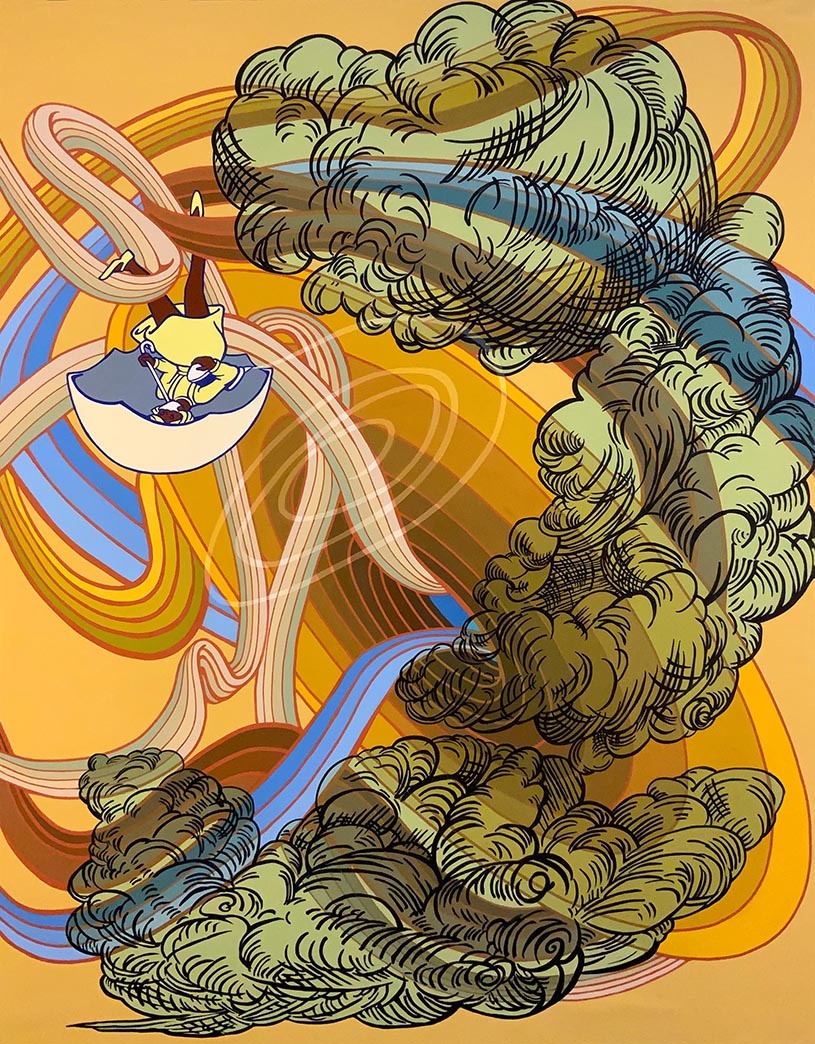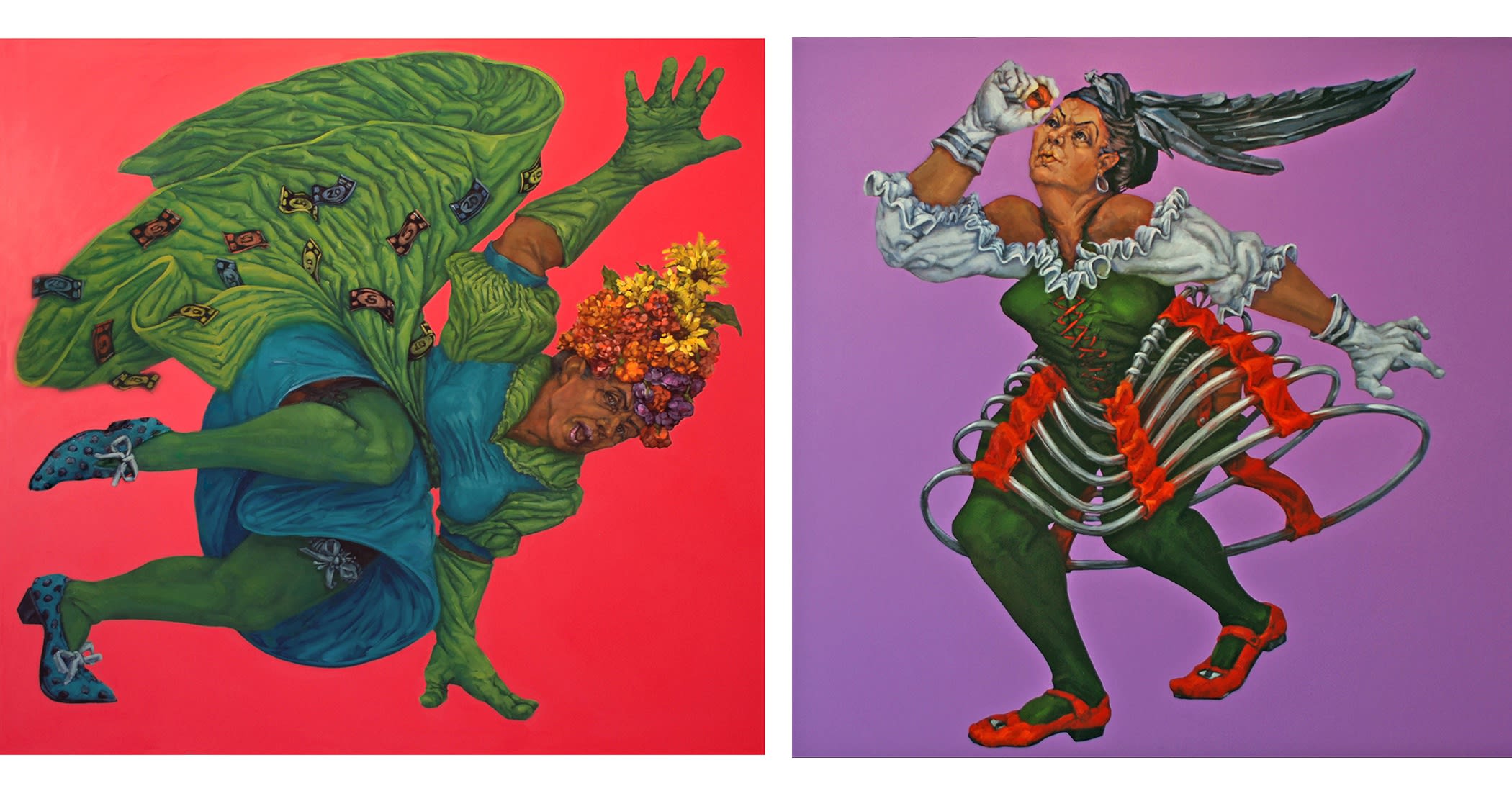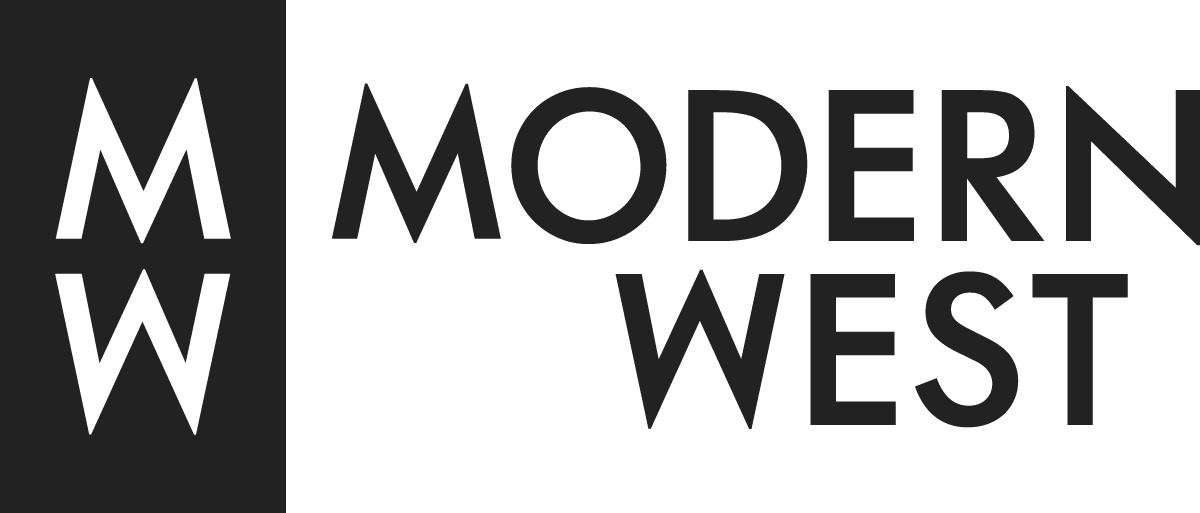
You are a native of the Salt Lake City area. Considering the traditional and cultural standards of Utah, how does this geographical location impact your work?
Categorically, I am a political artist, and what I mean by political is any art with a point or an opinion of a social or personal context, whether concrete or abstract. The motivation to develop my work is multifaceted, but my foremost interest is to increase my understanding of the political and social discourse of the time and spaces I am in. My narrative strategies and the media process grow organically. I allow the process to determine the narrative outcome, resulting in an approach and intention that destabilizes the viewer by offering numerous interpretive choices that may or may not seem plausible to allow the viewer to interact with material that may be emotionally complicated.

7 Steps Forward 7 Steps Back
This project was several years in the making. Initially, my research included Internet investigations, mapping of contemporary and historical northern and southern migratory routes, observational fieldwork that integrated conversations with migrants who have made the journey, my familial history, and a seven-day trip along the Arizona/Mexico border. The series & title, 7 Steps Forward 7 Steps Back, is a ritual that some people practice when a person dies. For seven days, four times a day, the survivors pay homage to the deceased by visiting and marking the burial site with seven lines and walk forward seven steps to the site, and when leaving, walk backward seven steps. The ritual is to assure that the dead will have safe entry into the afterlife.
A practice of some nations to regulate and control populations by managing the births, deaths, reproduction, and illnesses of a population. The distinctive quality of this political technology is that it allows for the control of entire populations. 7 Steps Forward 7 Steps Back: BioPower is literally having power over bodies. The border patrol uses drones or unmanned aerial vehicles to watch the border, US citizens with the ACLU are taking action as the drones must stay in Us Airspace and US citizens & rights are being compromised. Some Mexican people refer to them as Mosquitos.

Tantalus: Salt
Tantalus is based on my experiences traveling through communities impacted by industry and government. Traveling within the margins of this rigid space allowed me the capacity to perceive others in myriad ways, all of which are now dependent not on preconception but on circumstances and experiences. Often times a space is defined by who guards and patrols its perimeter, and my action of walking through these spaces ensures that I never know in advance what the painting will be. In walking and asking questions with community members, I generate knowledge that develops new queries and aid in the assemblages of my imagery.
Spending time in the West desert during Covid and after the earthquake near the epicenter and the Morton Salt Plant and by changing the skin color of the Morton Salt Girl, who is no longer white but dark brown, to indicate many of the essential workers who continued to go to work on-site when others worked from home. During the pandemic, Latinx and Black Americans were overrepresented in essential jobs resulting in an increased risk of contracting the virus during the pandemic. The clouds are representative of both the virus and the landslides that can happen near the epicenter of the 2019 5.7 quake near Magna. The following imagery indicates my formal process when painting for this series:

Can you tell us a little bit about your process for your portraits in Mujeres de Colores? Are these inspired by more generalized or specific people/ideas?
Mujeres de Colores are paintings created from fragments in my memory of specific women who may or may not be alive. My characters are part real, part imagined; they are reconstructed from my memories of women. I draw imagery from sources such as superheroes, fashion, and identity, manipulating various codes to suggest political, social & personal narratives.
Figuration is a way to examine stereotypes & to present a vision of dominance and submission, representing female power & fragility. The psychology of the figures & physicality of painted aluminum reference ex-voto paintings, exemplifying exoticism, & confrontational sensuality. I interrupt this hyper-sexuality with powerful yet vulnerable facial expressions and attention to detail, creating, paradoxically, a strong impression of unreality, my attempt to reconstruct personas from my fragmented memory.
I use an intense color ground that either subtracts or intensifies skin color that is anxious, indicating impatience for social power structures to change. The lack of context is metaphorical; it portrays repressed cultural memories and the imbalance of social-political power.

In addition to your characteristic portraits you also facilitate large community-based murals. How do these projects influence your personal work?
I initiated this course with a broad goal of bettering student artists & social horizons and allowing them to connect with people and communities both on and off the University campus. My educational approach seeks to teach critical and social consciousness, promote dialogue across economic, political, and educational lines, and to inspire action among community members and university students.
The process I have developed for mural-making is similar to my studio work in that it starts with a conversation with the specific community in which the mural will be located. The development process is multi-faceted, with shared goals of the medium of murals and working together to form the message. Student artists and community members initially meet at the mural site and enter into dialogue to understand differing points of view. After participants review secondary material, we begin creating the imagery for the mural, going over objectives through evaluation to realize multiple focuses of themes; then, as a team, we select ideas that stimulate community dialogue. We then codify our ideas, translating our research into full-scale maquettes. We present the community with the maquettes and ask individuals to select the image that best typifies their community and seek participation from community members. After input and selection by community members, we begin a prolonged process that is transformative and self-reflective for the muralists and the community.

